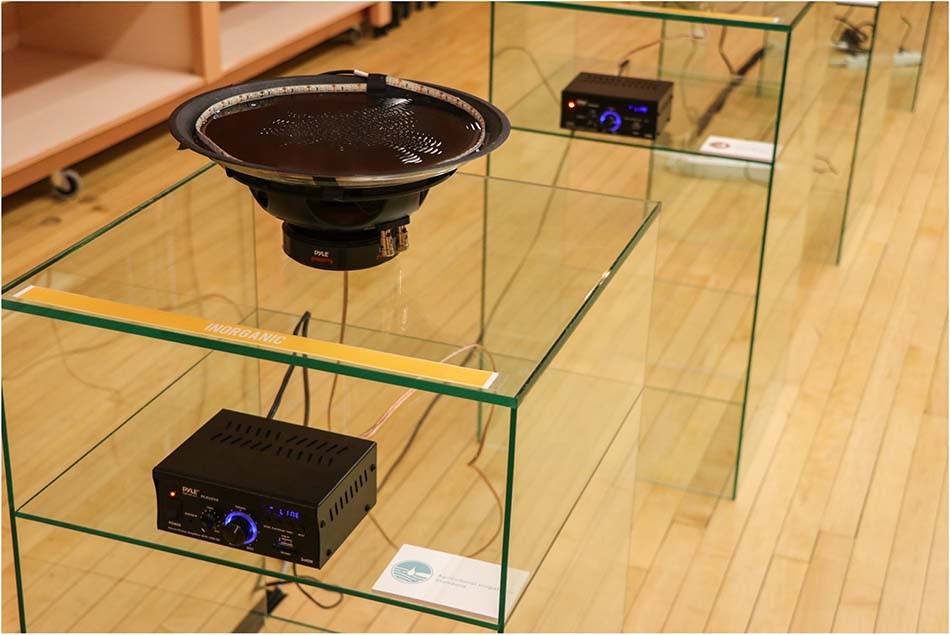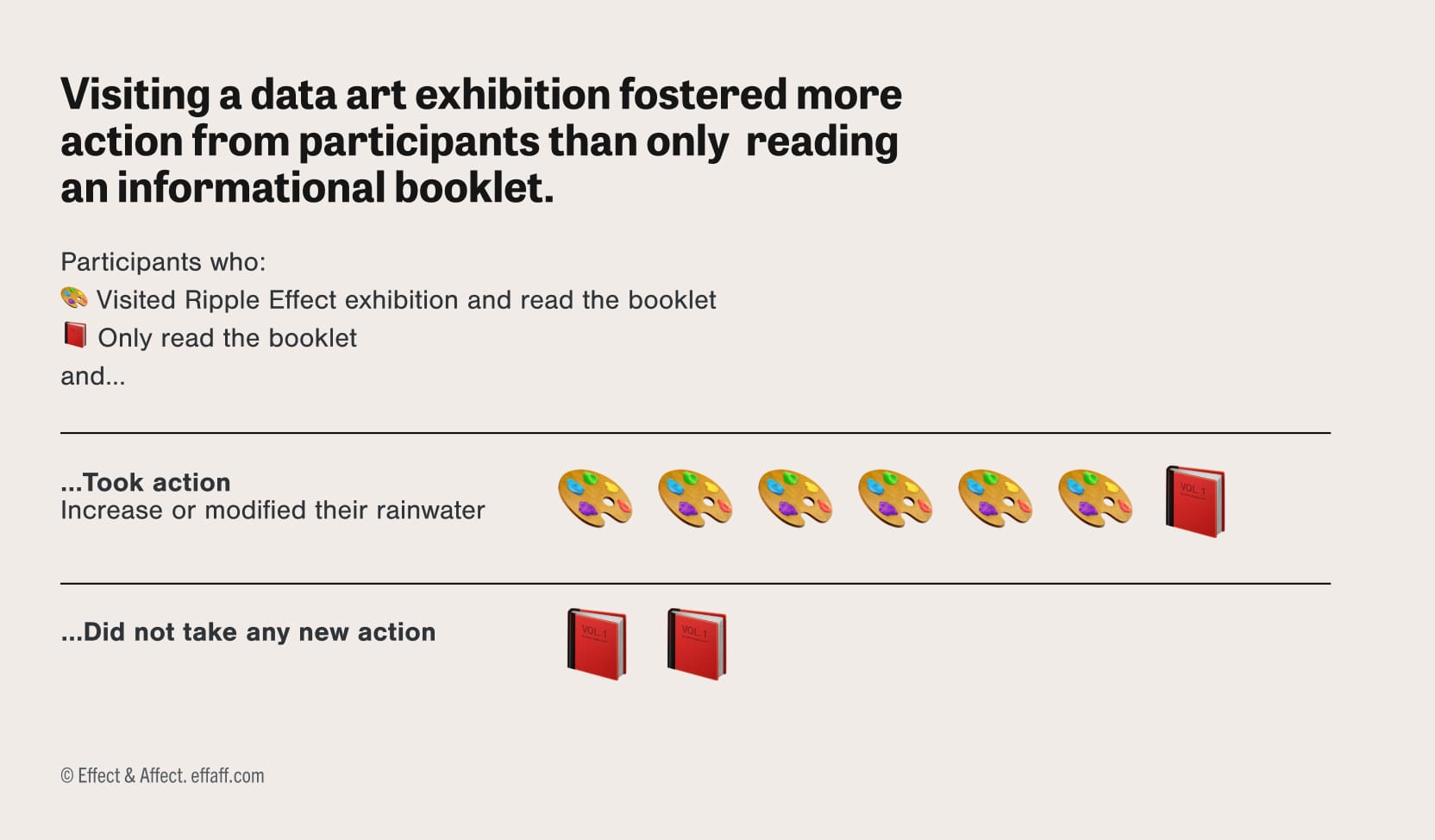Washing away environmental apathy
Tired of feeling like your environmental pleas fall on deaf ears? Imagine using art as a catalyst to jolt people into caring about sustainability. Sounds far-fetched? Read on.

For years, traditional science communication has grappled with a frustrating paradox: piling more facts on people about environmental issues doesn't necessarily change their behavior. This phenomenon is known as the value-action gap — a chasm between what we know and what we actually do.
In a recent study, researchers explored a different approach to displaying numbers, well more precisely: an artistic one.
Over two and half years, participants collected environmental data like rainwater, soil, and plant samples which were then visualized in two ways:
- A standard data booklet
- An interactive art installation called Ripple Effect, created by Dorsey Kauffmann, where speakers played audio based on contaminant levels, causing water to vibrate.
Then, they collected information about how people reacted to either:
- only the booklet
- or the booklet accompanied by an interaction with Ripple Effect.

The impact? Compared to those reviewing the traditional booklets, Ripple Effect participants showed stronger surprise and concern — emotions linked to greater intentions to modify behaviors protecting environmental and personal health.
“Our rainwater, you know, the sound and everything is telling me differently than I had ever seen before.”
Months later, the art exhibition visitors could vividly recall the experience and were more likely to have acted on the data by increasing rainwater use or finding new water sources. Those with safe rainwater increased their rainwater usage while others with unsafe results limited the usage of rainwater (like watering vegetables that they’d be eating later).
The art installation bridged the value-action gap, turning knowledge into emotion, and emotion into action.

An unsuspected benefit was the accessibility of Ripple Effect. One participant affected by vision impairment even said “for me it’s easier to hear it than to see.”
Where traditional science communication may fall short, environmental art offers a promising solution. By co-creating immersive, emotionally resonant experiences, communities can overcome barriers to inspiring pro-environmental change.
The key?
Fostering embodied learning, personal relevance, and lasting memories can transcend mere facts.
Why does it matter?
As information designers, it's easy to fall for the Information-Deficit Model: The assumption that providing knowledge is enough to produce better decisions. The next time you're tempted to bombard your audience with yet another data-heavy report, consider the power of art. It might just be the catalyst that jolts them into caring — and acting — on the environmental issues that matter most.
Where to start:
- Identify the value-action gap. Recognize the disconnect between environmental knowledge and corresponding behaviors within your target audience.
- Consider a multi-sensory experience. What does the data sound like? Smell like? Feel like? For more inspiration, check out Loud Numbers, Domestic Streamers, and some wonderful sensory projects in the Unusual category of the IIB Awards.
- Look for a Personal Connection. For instance, water is a daily common object, what medium could create a direct link between participants and the subject matter?